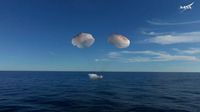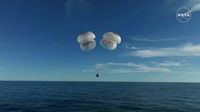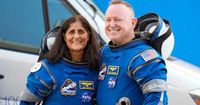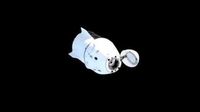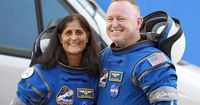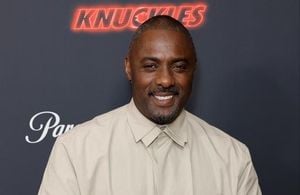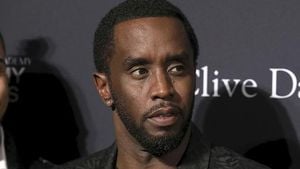CAPE CANAVERAL, Fla. — Stuck in space no more, NASA astronauts Butch Wilmore and Suni Williams returned to Earth on Tuesday, March 18, 2025, concluding a dramatic mission that commenced with a mishap during their June 5, 2024, test flight aboard Boeing's Starliner crew capsule. Splashing down at 5:57 p.m. EDT in the Gulf of Mexico off the coast of Tallahassee, their unexpected journey lasted 286 days—278 longer than originally planned.
Their odyssey began last spring when the first crewed test flight of Boeing's Starliner experienced a series of technical problems as it neared the International Space Station (ISS). Instead of returning as planned after just a week, the circumstances forced NASA to send the Starliner back empty, requiring Wilmore and Williams to hitch a ride home on a different spacecraft.
On March 16, 2025, the arrival of their relief crew aboard a SpaceX capsule finally allowed Wilmore and Williams to depart the ISS. NASA's Nick Hague and Russian cosmonaut Alexander Gorbunov had arrived months earlier, making space for the two astronauts. The decision to cut their stay short was also motivated by an uncertain weather forecast.
"On behalf of SpaceX, welcome home!" radioed Mission Control as their capsule descended. Wilmore responded, "What a ride!" confirming a profound and unprecedented experience in space.
Throughout their extended time in orbit, Wilmore and Williams completed an astounding 4,576 orbits around Earth and traveled a total of 121 million miles. They conducted experiments, fixed equipment, and even engaged in nine spacewalks, with Williams accumulating a record 62 hours outside the ISS—the most time spent spacewalking by a female astronaut over her career.
Ironically, while others have spent longer stretches in space, the combination of uncertainty and prolonged mission duration brought unique challenges. Like those who had surpassed them, such as Frank Rubio, who holds the American record at 371 days in space, Wilmore and Williams faced the physical tolls associated with extended exposure to microgravity.
Experts warn that longer stays in outer space can lead to significant health impacts. Astronauts often experience muscle and bone loss, as well as vision impairments. Rachael Seidler, an applied physiologist at the University of Florida, notes that differences in health effects between short and long missions are significant. Williams and Wilmore are now expected to undergo extensive medical evaluations as part of NASA's Spaceflight Standard Measures to assess the impact of their extended mission on their health.
Their journey was stirred into a critical political discussion in late January when former President Donald Trump urged SpaceX founder Elon Musk to expedite their return amid criticisms of the Biden administration concerning the mission's delays. Musk's team responded by replacing the planned new crew capsule with an older, used one, providing relief but raising issues about accountability.
"If there's anyone who could have done that job, it was her and Butch," commented Williams’ sister, Dina Pandya, reflecting on the situation's extraordinary demands. Family members waited anxiously for their return. Wilmore, who missed much of his younger daughter's senior year of high school, and Williams, who relied on internet calls from space, both expressed how challenging the separation was.
According to recorded statements, community support rallied around Williams, who is of Indian and Slovenian heritage; prayers for her safe return were offered at various Hindu temples across the U.S.
On their return, it was noted that Wilmore and Williams would undergo tests once they arrived in Houston to evaluate their adjustment back to gravity after such an extended period in space. Medical specialists will conduct an array of tests to monitor potential shifts in their health metrics—cognitive abilities, cardiovascular systems, and even microbiome profiles.
The ISS is scheduled for decommissioning in 2030, paving the way for private stations to replace it, enabling NASA to move its focus to missions addressing the Moon and Mars. This transition marks a pivotal change in how astronauts reach and maintain presence in space, emphasizing the significance of their journeys and those who continue pushing the boundaries of human exploration.
After moments of anticipation and reflection, Williams and Wilmore can now embrace dedicated time with their families—a new chapter awaits as they adapt back to life on Earth following their prolonged engagement with the cosmos.
